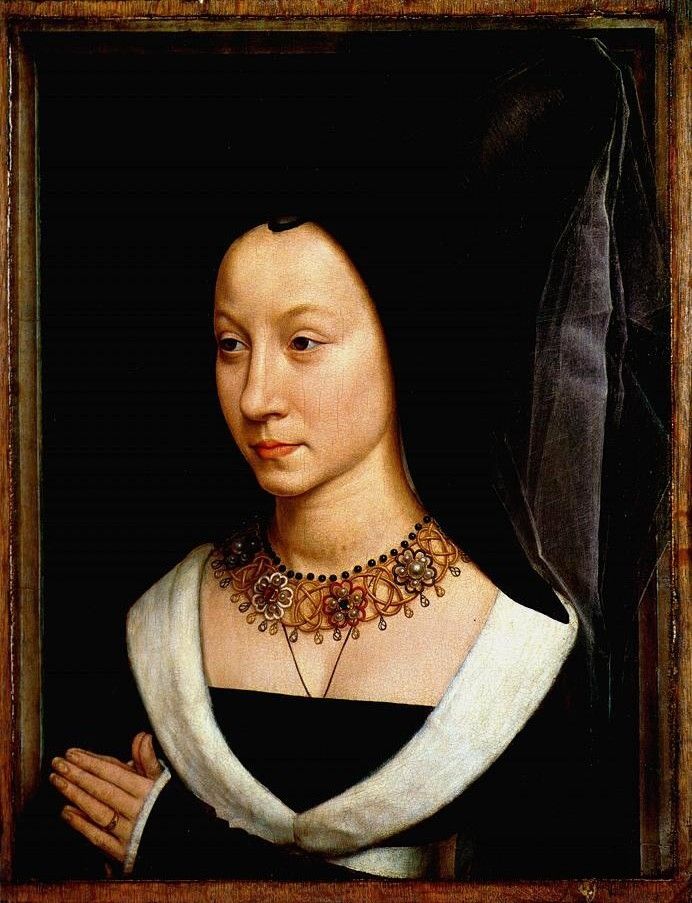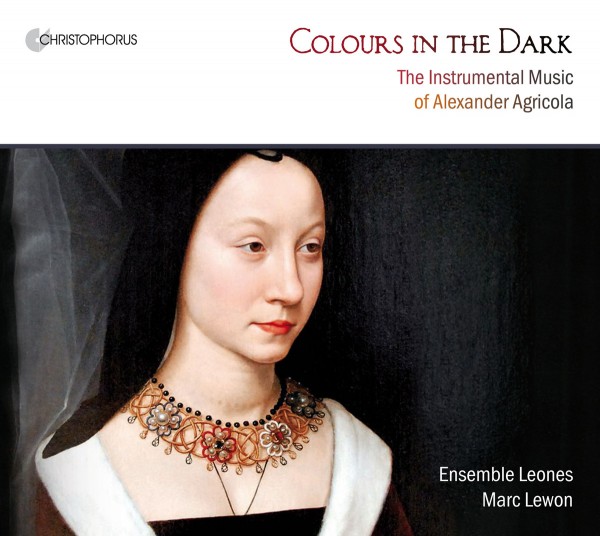
medieval.org
leones.de
Christophorus 77368
2012
Alexander AGRICOLA
(c. 1445/6-1506)
01 - In minen Zin
à 3 [2:26]
02 - De tous biens plaine à 3 · Hayne van
Ghizeghem (c.1445-c.1476-97) [5:03]
03 - De tous biens plaine à 2 · Roelkin
(spätes 15. Jh./late 15th cent.) [1:18]
04 - De tous biens
plaine II à 3 [2:40]
05 - De tous biens
plaine III à 3 [2:13]
06 - De tous biens
plaine IV à 3 [1:18]
07 - De tous biens plaine V à 3 [1:28]
08 - Tandernaken (Monodie) · anonym/anonymous
[6:17]
09 - Tandernaken
à 3 [4:04]
10 - Si congié prens (Monodie) · anonym/anonymous
[1:38]
11 - Si conge prens
à 3 [1:51]
12 - D…
à 3 [1:14]
13 - Je ne puis plus
à 3 [1:31]
14 - Cecus non judicat de coloribus à 3 [5:50]
15 - Fors seullement
à 4 · Alexander Agricola oder/or Antoine Brumel (c.
1460-1512/13) [2:57]
16 - Duo
· Alexander Agricola & Johannes Ghiselin (fl. 1491-1507)
[1:57]
17 - Pater meus agricola est à 3 [6:09]
18 - Tout a par moy à 3 · Walter Frye (†
vor Juni/before June 1475) [1:19]
19 - Tout a par moy
II à 3 [3:07]
20 - Tout a par moy
I à 4 [2:36]
21 - Agricola VIII / Obrecht canon III [1:21]
«De tous biens plaine / Tinguely-Brunnen» (a)
· Fabrice Fitch (*1967)
22 - Helas, madame
que feraige [1:56]
23 - Agricola VIII / Obrecht canon III [1:14]
«De tous biens plaine / Tinguely-Brunnen» (b)
· Fabrice Fitch
24 - Le serviteur à 3 · Guillaume Dufay
(1397-1474) [4:43]
25 - [Le serviteur] à 2 · anonym/anonymous
[3:25]
26 - Le serviteur
à 4 · Alexander Agricola ? [2:32]
27 - Agricola IX. «Je nay dueil»
· Fabrice Fitch [5:22]
28 - Fortuna
desperata à 6 [3:35]

Ensemble Leones
Marc Lewon
Raitis Grigalis, Gesang
Baptiste Romain, Renaissancevioline, Vielle
Elizabeth Rumsey, Renaissancegambe, Viola d’arco
Uri Smilansky, Viola d’arco
Kirsty Whatley, Harfe
Gawain Glenton, Zink
Marc Lewon, Plektrumlaute, Quinterne, Cetra, Viola d’arco
Ehrengast:
Crawford Young, Plektrumlaute
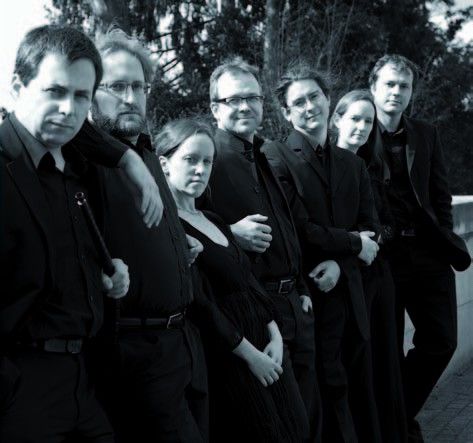
Recording: 23.-26.4.2012, Heilig Kreuz Kirche Binningen, Switzerland
Recording producer & digital editing: Michaela Wiesbeck
Editor & layout: Joachim Berenbold
Coproduction with Radio SRF 2 Kultur
Executive producer Radio SRF 2 Kultur: Annelise Alder
Executive producer note 1 music: Joachim Berenbold
Cover picture: Hans Memling Portrait of Maria Maddalena Portinari, c.
1470, Metropolitan Museum of Art, New York
Artist photos: Björn Trotzki (except F. Fitch: Richard Bram / C.
Young: Sergio Fortini)
© 2013 note 1 music gmbh, Heidelberg, Germany
Die Instrumente und ihre Bauer / The Instruments and their Makers
Baptiste Romain
Renaissancevioline - Richard Earle, Basel (CH) 2008
Vielle - Judith Kraft, Paris (F) 2007
Elizabeth Rumsey
Renaissancegambe/Renaissance gamba - Robert Foster, Wiveliscombe
(GB) 2001
Viola d’arco - Richard Earle, Basel (CH) 2005
Uri Smilansky
Viola d’arco - Richard Earle, Basel (CH) 1991
Kirsty Whatley
Harfe/harp - Simon Capp, South Horrington (GB) 2006
Gawain Glenton
Stiller Zink/mute cornetto - Serge Delmas, Paris (F) 2011
Krummer Zink/cornetto - Matthew Jennejohn, Montreal, Quebec
(CAN) 2011
Crawford Young
Plektrumlaute/plectrum lute - Joel van Lennep, Rindge, New
Hampshire (USA) 1982
Marc Lewon
Plektrumlaute/plectrum lute - Stephen Gottlieb, London (GB) 2001
Quinterne/gittern - George (Philip) Stevens, Lydd (GB) 2004
Viola d’arco - Richard Earle, Basel (CH) 2009
Cetra - Julian Behr, Wyhlen (D) 2012
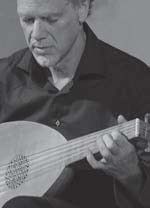
I would like to dedicate this recording to my teacher and friend
Crawford Young,
whose enthusiasm for Agricola’s works inspired my own studies of
this composer.
I want to thank him for communicating his knowledge and for
participating in the present recording.
Marc Lewon
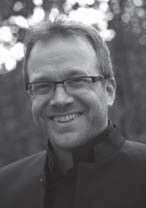
Alexander Agricola

Alexander Agricola (c. 1456-1506) seems to have taken pleasure in
enigmas; not the enigmatic canons favoured by other composers of his
day, but the sort of games that ask questions of the acts of performing
and listening — that is, interpretation in every sense of the
word. Even the titles of some of his pieces hint at this intention: Pater
meus Agricola est is a quotation from St John’s Gospel, but
it can also be read as a signature (‘my father is a
farmer’), ‘Agricola’ being the Latinized form of the
composer’s patronymic, ‘Ackerman’. The title of Cecus
non iudicat de coloribus is still more gnomic: ‘the blind man
cannot distinguish colours’. So much ink has been spilled
concerning the possible meaning(s) of this title, and so often has it
been recorded under Agricola’s name, that it’s worth
pointing out that its many sources ascribe it to different composers,
which of course presents us with another enigma. But apart from the
style of the piece, which fits Agricola’s securely attributed
pieces, one might observe that the title itself (however it originated)
also fits the enigmatic image that the composer appears to have
cultivated. Hence, his authorship of Cecus has rarely been
questioned. In fact, Pater meus and Cecus are cut from
the same cloth: disguised repetitions are heard (or not), ostinatos
begin or end with no clear signal, short points of imitation, and other
intimations of process, come and go. For a modern audience, used to the
ars perfecta of Josquin or (later) Palestrina, Agricola’s
style can seem obscure, diffuse, even rambling. A more positive view
might be that where a Josquin leaves no tone unturned, so to speak,
Agricola leaves open the suggestion of all the material’s
‘might have been’s’.
Agricola’s career was typical of the most successful composers of
his time: early education as a choirboy in his home town of Ghent where
he was born (probably in the mid-1450s), followed by early
peregrinations between relatively junior posts in Northern France,
which led him to the French royal chapel, where he would have sung
under Johannes Ockeghem, the most famous composer then living.
It’s not known when Agricola arrived there, though it’s
likely to have been some time in the 1480s; but Agricola’s
penchant for the enigmatic and his play with musical style are both
traits evident in the work of the elder composer, which suggests that
his stay may have been a decisive factor in his compositional
development. In the early 1490s he left the court for Italy without
leave, and the king himself exerted considerable pressure to get him
back. Whether he succeeded isn’t known, though it’s not
impossible, for the court’s documents from this period are
patchy. What is known is that Agricola did spend some years in Italy
(once again, a typical pattern), perhaps returning to Ghent in 1499 to
help settle his late mother’s estate. (In the matter of parentage
Agricola’s biography is exceptional, for Lijsbette Naps was an
independent, successful and unmarried businesswoman, who enjoyed
considerable esteem despite conceiving both Alexander and his brother
Jan out of wedlock.) The following year he was appointed at the court
chapel of France’s great rival, Habsburg Burgundy, a move that
would have allowed Agricola to plan for retirement in his homeland.
Poignantly, this likely plan came to naught, for he died suddenly at
Valladolid (or possibly nearby, at Ribera del Duero) during the second
of the court’s visits to Spain, in mid-August 1506. His death
coincided with a virtual explosion in the dissemination of his music in
both manuscripts and printed sources in the years immediately before
and after: one wonders what his already considerable posthumous
reputation might have been had he been spared a decade more.
Agricola left a substantial, but by no means enormous body of work,
including several Masses, motets, and a more important volume of
chansons. Although his discography in the last decade has grown more
representative of his output as a whole, his name has been associated
in modern times with a considerable number of pieces that seem to have
been conceived without text, such as the Pater meus and Cecus
mentioned earlier; and it is on this repertoire that the present
recital focuses. Pater meus and Cecus are exceptional
in being particularly extended, and entirely freely invented (so far as
is known). More typical are the shorter compositions based on a
pre-existing line from a well-known chanson, a genre to which Agricola
is the single most important contributor. One example is the very
popular Dutch song T’Andernaken, which is heard with its
full text just before Agricola’s setting. In the case of the
mid-15th-century smash hit De tous biens plaine by Hayne van
Ghizeghem, no fewer than five settings for three voices survive from
his pen, of which four are presented here. Hearing them in close
succession and in close proximity to the original chanson (with the
tenor voice that Agricola borrowed here sung) allows one to appreciate
the range of Agricola’s invention. His two re-workings of Walter
Frye’s Tout a par moy (likewise alongside the original)
form another set. The four-voice version is especially remarkable for
the use of a four-note ostinato in each of the piece’s two halves
(played here on the bray-pin harp), each corresponding with the opening
pitches of the respective half of Frye’s tenor – all this
while Frye’s complete tenor unfolds in another voice. The final
statement of the ostinato results in a mischievous false relation.
Another set, in which the cornetto predominates, allows us to hear a
number of freely-composed songs whose texts survive only as a fragment.
Two other tenor-settings are included here more speculatively. The
four-voice Du tout plongiet, based on the tenor of
Ockeghem’s Fors seulement l’attente que je meure,
is ascribed in several (possibly related) sources to Agricola’s
contemporary Antoine Brumel, but it also appears under Agricola’s
name in Petrucci’s Canti C of 1504. While space does not
permit a full exploration of the question, Petrucci’s testimony
is at least worth considering, for the setting has numerous points of
contact with Agricola’s style; hearing it in the company of his
securely ascribed settings presents a fresh opportunity to consider the
matter. Fewer doubts obtain in the case of the four-voice setting of
the tenor of Du Fay’s Le serviteur, which appears in its
only source amongst a clutch of pieces that are certainly by our
composer. This circumstance, coupled with the piece’s style,
makes his authorship all but certain, but only recently has it appeared
in an accurate edition, which has made this first performance on disc
possible.
Agricola and friends: a fifteenth-century stylus fantasticus
Agricola’s music abounds in games that have musical style as
their object: cadences in particular are treated to all manner of
tricks, sometimes appearing so close together that they cease to
function as stable points of arrival (as in his Le serviteur),
and at other times being undermined in a variety of ways. In his
treatment of this most fundamental of musical building-blocks, Agricola
(like his possible mentor, Ockeghem, but in a very different way)
pushes the musical style of his time in unexpected directions. But he
was not alone in courting extremes. A couple of pieces are included on
this recording whose manner is related to his in spirit: first the
wonderfully zany two-voice setting of De tous biens plaine (by
the otherwise unknown Roelkin), whose free voice scurries up and down
two-and-a–half octaves; and second, the anonymous two-voice Le
serviteur (which sets not Du Fay’s tenor, but his top line)
whose free voices behaves quite classically for about half the
piece’s duration, before embarking on a series of rhythmic
proportions of increasing speed and complexity (from 3:2 to 10:2). Some
scholars have tended to regard pieces like this as exercises in
rhythmic notational theory, or worse, dismissed them as a sort of
‘paper music’, demonstrations of intellectual
sophistication not intended for performance. Such a view projects onto
this repertoire a set of well-rehearsed modern prejudices: for a long
time, after all, the music of the ars subtilior period was
tarred with a similar brush, until performers appeared who were able to
master its rhythmic complexity and, moving beyond the notes, project
the sense of line, poise, and pacing that characterises the best of
such pieces. Not coincidentally, composers and performers of
twentieth-century music were themselves exploring music of increasing
complexity, and while that trend itself has itself aroused controversy,
it has created to a context within which the rhythmic abandon of these
late fifteenth-century duos may be appreciated more sympathetically
than at any time since their composition. The same might equally be
said for Agricola’s music.
About the agricologies, and Agricola VIII and IX
My own contributions to this recording are part of a wider project, a
multi-volume cycle entitled agricologies, that attempts to
project Agricola’s sense of play, and his inventive treatment of
borrowed material, into a contemporary context. In the two pieces
commissioned by Ensemble Leones, I have dispensed with a score, since
these musicians are used to performing music from a time when scores
were also superfluous: none the less, there are for both pieces
sufficiently precise instructions as to the co-ordination of the parts.
Agricola IX is the first piece of the agricologies to
include a wind instrument. The pitch-material for the cornetto muto
part is taken from the opening bars of Ockeghem’s four-voice
rondeau Je n’ay dueil. Agricola based his own rondeau, Je
n’ay dueil qui de vous ne viengne, on the very short opening
phrase of its lowest voice; I therefore incorporated the opening
phrases of the other three voices in my own piece. Some of these are
compressed into quarter-tones, which allows the bray-pin harp and the
three accompanying strings to comment on the material using a
combination of split frets (viole d’arco) and a modern viola bow
(harp), which is used in various ways. The challenge of using early
instruments, it seems to me, is to imagine how they might be used today
had they never fallen out of fashion. Agricola IX is perhaps
the most far-reaching piece of the set, from this point of view at
least. It is dedicated to Martin Iddon and Kate Whittaker.
Agricola VIII is drawn from the material of Agricola’s perpetuum
mobile piece De tous biens plaine II (which appears on this
recording), tonally compressed fragments of whose moto perpetuo
material are redistributed between four unspecified plucked instruments
(two of which function as a pair, here a viola d’arco and a
Renaissance violin, the two other individual parts being played on a
lute and another viola d’arco). I wrote this setting in 2010 as a
gift for my friend and mentor, the musicologist David Fallows. The
following year I visited him at his home in Basel, where I saw the
famous Tinguely-Brunnen for the first time. Immediately came the wish
to write a piece around them, but when I returned a few months later to
attend the recording sessions for this disc, I realized, to my surprise
and delight, that I already had. I wish to thank Marc Lewon and all the
musicians of Ensemble Leones, for the generosity and open-mindedness
that characterised our work together. I hope that something of that
purposeful playfulness comes through in the music.
Fabrice Fitch
